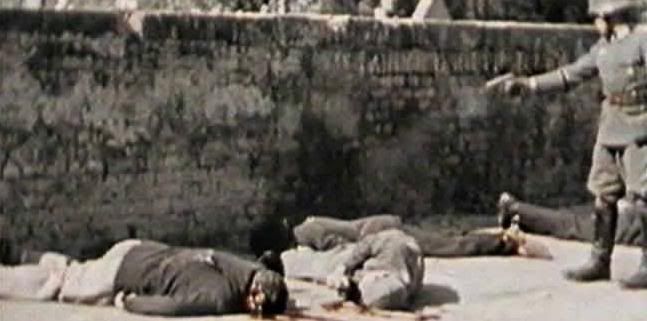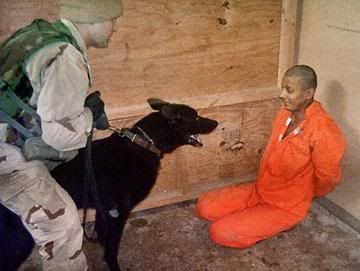Special Action Division
| Nationality | Skgorrian |
|---|---|
| Service Branch | Storm Squad (SS) |
| Role | Pacification and Extermination |
| Operational Strength | 15,000 troops |
| Base of Operations | Neue Wandenburg, North Skgorria |
| Motto | Action Without Delay! |
| Founding Date | January 1990 |
| Commanding Officer | Storm-General Beckenbauer |
Overview
Where the Skgorrian Military goes, Special Action Division follows. This SS formation is only lightly armed with light vehicles and aircraft, but its role is not front-line combat. Instead it serves as Skgorria’s tool for racial and political extermination, eliminating all those who do not conform to the Iron Rule.
History
When the German invasion of 1941 threw all of the Soviet Union into chaos, Olgich Peter and the NSBPP (National Socialist Brzno People's Party) rose up in armed opposition to the disorganised and unpopular Soviet authorities. The Red Army was busy trying in vain to stop the Germans penetrating the borders of Brzno and was totally unprepared for the rebellion. In addition, many of the Red Army soldiers on the borders of Brzno were Skgorrian, and opted to rise with their countrymen and collaborate with the Nazis. Faced with enemies both on the inside and outside, the Soviet hold on Brzno was quickly broken and Olgich Peter was swept to power. In order to cement his hold on Skgorria (he had no interest in ruling the other nations making up Brzno), and also to prove his National Socialist credentials to Berlin, he began a campaign to exterminate his political enemies and any who did not fit the racial profiling of the NSBPP. Initially this was a rather haphazard affair, with various armed gangs roving the countryside acting under the orders of Peter. These gangs varied from loyal party members to bandits who were out to profit from the instability of the region, and the result of this was that the NSBPP had no idea who or how many people were being killed. The German occupiers looked down on this disorganised approach and helped form a group similar to the Einsatzgruppen that would be responsible for the destruction of the opposition. This was the birth of Special Action Division, and was inititially comprised of the most loyal NSBPP members.

Above: a member of Special Action Division executes communist sympathisers, 1943
They continued the extermination process in Skgorria and were only stopped by the Red Army's counterattack in 1944, when all availible units were called up to try and stem the Red Tide. The Red Army was not stopped despite the best efforts of the Germans and Skgorrians, and after the conquest all captured members of Special Action Division were executed and the organisation, along with the SS, was declared illegal.
After the end of the Brzno War of Seperation, the Special Action Division was re-formed as part of the SS. SAD went on to serve in such countries as British Londinium, Galation, Demaray and Die Boerstaat until the One-Day War brought about the collapse of the Pact of Iron and gave rise to the Empire of the Wolf. Special Action Division was finally disbanded in a ceremony at Skgorria City and large numbers of SAD personnel went on to join the June Loyalists, still calling themselves "Special Action Division" and wearing their old insignia. Ironically they would meet their end in clash of the old and the new at the hands of Storm-General Beckenbauer and his newly formed Imperial Guard.
SAD uniforms are now highly prized items amongst militaria collectors around the world, and it has been rumoured that Storm-General Beckenbauer still wears his from time to time.
Modus Operandi
The Special Action Division is not heavily armoured and also lacks significant numbers of artillery and air-defence. To counter this, the division is very mobile and maintains large numbers of BMP-3s, BTR-90s, UAZ trucks and transport helicopters such as the Mi-8. In addition, it also has a few Godhammer cannons configured for aerial transportation. The infantry are just as well armed as those of the regular SS units, but NCOs are also issued with various bioweapon grenades. Special Action Division will typically follow close behind SS or Army formations and will rarely, if ever, be involved in front-line combat
There are two types of action that SAD will take part in: Select and Total extermination. These will either take place in specially constructed camps, or out in the open.
Select Extermination
SAD will march into cities and towns that have already been secured by an outside force that is known to contain large numbers of Jews or other undesirables. Once they enter a town, orders are issued to all Jews and undesirables to assemble for deportation out of the town. Those who refuse are hunted down and rounded up. SAD employs local anti-semites or collaborators to assist them in many cases.

Above: A local collaborator herds a dissident to the deportation point, note the citizens fleeing before him.
Those who are gathered are then sent to designated sites outside the cities and towns. Usually these massacre sites are graves dug in advance, shallow pits, or deep ravines, where executioners are already waiting with orders to kill them with machine guns or pistol shots to the head. Sometimes when ammunition and other resources are low, the victims are simply tied together and then crushed underneath the treads of armoured vehicles. The killers also seize the clothing and other belongings of the victims, and some victims are forced to strip naked just before their execution.
Once dead, the victims' graves are often buried with hand shovels or bulldozers to cover up the crimes, but some commanders such as Storm-General Beckenbauer prefer to leave the graves open. Often however the victims are only injured and not actually dead so they are subsequently buried alive. SAD solves this problem by gas canisters filled with mustard gas at the top of the grave with a time-delay switch. This gives enough time for the SAD to safely evacuate before the gas is released, killing any who somehow survived the execution.
Total Extermination
In the case of a large-scale extermination, then the following routine is carried out:
- Select a single large settlement or area that can be easily contained and isolated.
- Surround and contain the area to prevent assault from without: preferably non-SAD troops should be used, as they tend to have more combat experience and will be more heavily equipped. Order of preference runs as follows - SS, Army, SAD.
- A conventional artillery bombardment and/or airstrike will begin of the area/settlement - the duration and intensity will be entirely contingent on number of availible artillery pieces and supplies of ammunition. The same applies for aircraft.(In the event that the area is needed destroyed, or that time is of the essence, a Godhammer cannon or some other tactical nuclear blast will scourge the area. This option is rarely used, but it has been used in the past and as resolve and brutality grows amongst the SAD commanders, it doubtlessly will be so in the future.)
- The SAD will form up in a two-layered ring of infantry and vehicles. They then advance, surrounding the target area and shooting all on sight. The lines will be staggered so they are ten minutes apart, to catch anyone who has broken through or evaded the first line.
- When the SAD commander is satisfied that the area has been cleansed, bodies are disposed off in mass-graves in a similar manner to that of the Select Extermination. The delayed-action gas cannisters are once again employed to make sure that elimination is total.

Above: Artillery scores a direct hit on a hospital in the outskirts of a town minutes before the SAD moves in. No survivors were left in this town of 18,000.
In the event of a Total Extermination needing to be done in a camp (usually for politcal reasons), then victims are herded into camps and disposed of. The victims are told that they are being escorted there for their own safety/security, and as soon as the last victim has passed the gates then the killing begins.
Special Action Division also has specialists in torture, whose role is to extract useful information from captured persons. They are granted no additional rank or pay for becoming a torture expert, but a note is placed in their file noting that they have achieved this status and are referred to as "Specialists" even thouugh it is not their official title. These Specialists are picked up from the men and women of Special Action Division, already a brutal selection of people. In operational deployment, Specialists are often attached to the HQ or Intelligence companies of armed formations and placed under the direct command of the most senior officer, as it has been discovered that these brutal sadists need as much control as possible. During peacetime, they often find assignments with the SP or CFSS. No method is too extreme or brutal for these Special Action Division operatives.

Above: a Specialist questions a captured militiaman as to the whereabouts of a weapons cache.
